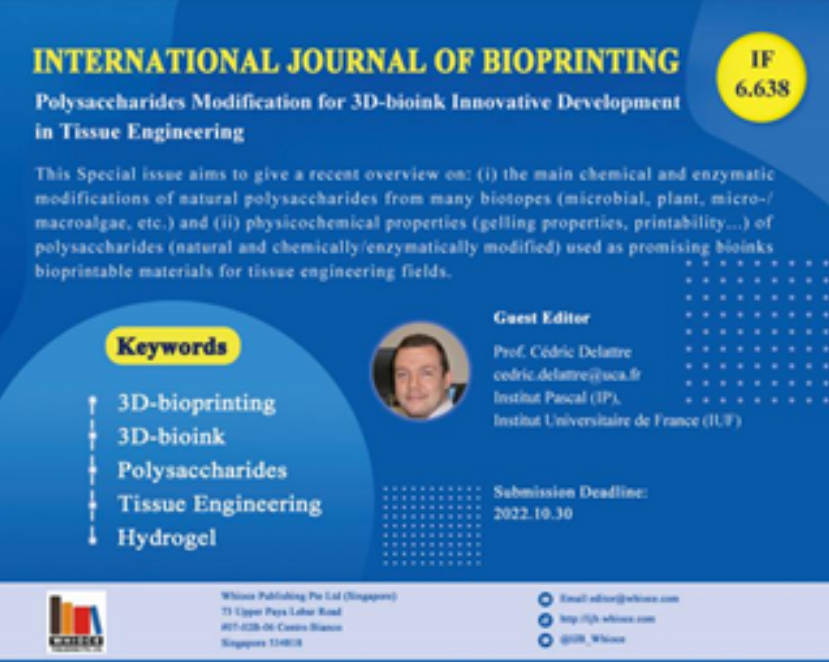Polysaccharides Modification for 3D-Bioink Innovative Development in Tissue Engineering--Call for Papers

Dear Colleagues
With up-to-date continuous technological advances of 3D bioprinters during the last two decades, innovative 3D printing processes using natural biopolymers as efficient formulation for 3D bioink have been increasingly more explored for regenerative medicine topics. In the field of tissue engineering, biodegradable, cell-biocompatible and nontoxic biopolymers such as polysaccharides have been efficaciously used as hydrogel biomaterial for skin, bone, tissue regeneration, etc. This Special issue aims to give a recent overview on: (i) the main chemical and enzymatic modifications of natural polysaccharides from many biotopes (microbial, plant, micro-/macroalgae, etc.) and (ii) physicochemical properties (gelling properties, printability...) of polysaccharides (natural and chemically/enzymatically modified) used as promising bioinks bioprintable materials for tissue engineering fields.
Development of an alginate–gelatin bioink enhancing osteogenic differentiation by gelatin release


